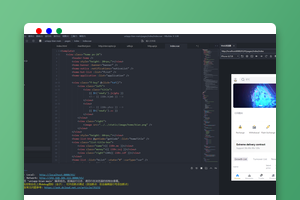之前的文章《一文讲解JS中Object对象一些操作方法(分享)》中,给大家了解了JS中Object对象一些操作方法。下面本篇文章给大家了解JS中Array对象一些操作方法,有一定的参考价值,有需要的朋友可以参考一下,希望对你们有帮助。

javascript中Array一些高效的操作方法
Array.from()
方法从一个类似数组或可迭代对象中创建一个新的数组实例。
console.log(Array.from("foo"));
// expected output: Array ["f", "o", "o"]
console.log(Array.from([1, 2, 3], (x) => x + x));
// expected output: Array [2, 4, 6]
Array.isArray()
用于确定传递的值是否是一个Array。
Array.isArray([1, 2, 3]);
// true
Array.isArray({ foo: 123 });
// false
Array.isArray("foobar");
// false
Array.isArray(undefined);
// false
Array.obsolete()
用于异步监视数组发生的变化
已被废弃 语法:Array.observe(arr, callback)
Array.of()
方法创建一个具有可变数量参数的新数组实例,而不考虑参数的数量或类型。
Array.of(7); // [7]
Array.of(1, 2, 3); // [1, 2, 3]
Array(7); // [ , , , , , , ]
Array(1, 2, 3); // [1, 2, 3]
//es5
if (!Array.of) {
Array.of = function () {
return Array.prototype.slice.call(arguments);
};
}
Array.concat()
方法用于合并两个或多个数组。此方法不会更改现有数组,而是返回一个新数组。
var array1 = ["a", "b", "c"]; var array2 = ["d", "e", "f"]; console.log(array1.concat(array2)); // expected output: Array ["a", "b", "c", "d", "e", "f"]
Array.copyWithin()
方法浅复制数组的一部分到同一数组中的另一个位置,并返回它,而不修改其大小。
var array1 = [1, 2, 3, 4, 5]; // place at position 0 the element between position 3 and 4 console.log(array1.copyWithin(0, 3, 4)); // expected output: Array [4, 2, 3, 4, 5] // place at position 1 the elements after position 3 console.log(array1.copyWithin(1, 3)); // expected output: Array [4, 4, 5, 4, 5]
Array.entries()
方法返回一个新的Array Iterator对象,该对象包含数组中每个索引的键/值对。
var array1 = ["a", "b", "c"]; var iterator1 = array1.entries(); console.log(iterator1.next().value); // expected output: Array [0, "a"] console.log(iterator1.next().value); // expected output: Array [1, "b"]
Array.every()
方法测试数组的所有元素是否都通过了指定函数的测试。
var array1 = [1, 30, 39, 29, 10, 13]; console.log(array1.every((x) => x < 40)); //out true
Array.fill()
方法用一个固定值填充一个数组中从起始索引到终止索引内的全部元素。不包括终止
var array1 = [1, 2, 3, 4]; // fill with 0 from position 2 until position 4 console.log(array1.fill(0, 2, 4)); // expected output: [1, 2, 0, 0] // fill with 5 from position 1 console.log(array1.fill(5, 1)); // expected output: [1, 5, 5, 5] console.log(array1.fill(6)); // expected output: [6, 6, 6, 6]
Array.filter()
方法创建一个新数组,其包含通过所提供函数实现的测试的所有元素。
var words = ["spray", "limit", "elite", "exuberant", "destruction", "present"]; const result = words.filter((word) => word.length > 6); console.log(result); // expected output: Array ["exuberant", "destruction", "present"]
Array.find()
方法返回数组中满足提供的测试函数的第一个元素的值。否则返回undefined。
var array1 = [5, 12, 8, 130, 44]; var found = array1.find((x) => x > 10); console.log(found); // expected output: 12
Array.findIndex()
方法返回数组中满足提供的测试函数的第一个元素的索引。否则返回-1。
var array1 = [5, 12, 8, 130, 44]; var index = array1.findIndex((x) => x > 10); console.log(index); // expected output: 1
Array.flat()
方法会递归到指定深度将所有子数组连接,并返回一个新数组。
var arr1 = [1, 2, [3, 4]]; arr1.flat(); // [1, 2, 3, 4] var arr2 = [1, 2, [3, 4, [5, 6]]]; arr2.flat(); // [1, 2, 3, 4, [5, 6]] var arr3 = [1, 2, [3, 4, [5, 6]]]; arr3.flat(2); // [1, 2, 3, 4, 5, 6] var arr4 = [1, 2, , 4, 5]; arr4.flat(); // [1, 2, 4, 5]
Array.flatMap()
方法首先使用映射函数映射每个元素,然后将结果压缩成一个新数组。它与map和深度值1的flat几乎相同,但flatMap通常在合并成一种方法的效率稍微高一些。
var arr1 = [1, 2, 3, 4]; arr1.map((x) => [x * 2]); // [[2], [4], [6], [8]] arr1.flatMap((x) => [x * 2]); // [2, 4, 6, 8] // only one level is flattened arr1.flatMap((x) => [[x * 2]]); // [[2], [4], [6], [8]]
Array.forEach()
方法对数组的每个元素执行一次提供的函数。
var array1 = ["a", "b", "c"]; array1.forEach((value, index, arr) => console.log(value)); // output 'a' // output 'b' // output 'c'
Array.includes(value,index)
方法用来判断一个数组是否包含一个指定的值,根据情况,如果包含则返回true,否则返回false。
var array1 = [1, 2, 3];
console.log(array1.includes(2));
// expected output: true
var pets = ["cat", "dog", "bat"];
console.log(pets.includes("cat"));
// expected output: true
console.log(pets.includes("at"));
// expected output: false
Array.indexOf()
方法返回在数组中可以找到一个给定元素的第一个索引,如果不存在,则返回-1。
/var beasts = ['ant', 'bison', 'camel', 'duck', 'bison'];
console.log(beasts.indexOf('bison'));
// expected output: 1
// start from index 2
console.log(beasts.indexOf('bison', 2));
// expected output: 4
console.log(beasts.indexOf('giraffe'));
// expected output: -1
Array.join()
方法将一个数组(或一个类数组对象)的所有元素连接成一个字符串并返回这个字符
var elements = ["Fire", "Wind", "Rain"];
console.log(elements.join());
// expected output: Fire,Wind,Rain
console.log(elements.join(""));
// expected output: FireWindRain
console.log(elements.join("-"));
// expected output: Fire-Wind-Rain
//数组[1,2,3,3,4,5]求和
eval([1, 2, 3, 3, 4, 5].join("+")) = 18;
Array.keys()
方法返回一个新的Array迭代器,它包含数组中每个索引的键。
var array1 = ["a", "b", "c"];
var iterator = array1.keys();
for (let key of iterator) {
console.log(key); // expected output: 0 1 2
}
Array.lastIndexOf(item,index)
方法返回指定元素(也即有效的JavaScript值或变量)在数组中的最后一个的索引,如果不存在则返回-1。从数组的后面向前查找,从fromIndex处开始。
var animals = ["Dodo", "Tiger", "Penguin", "Dodo"];
console.log(animals.lastIndexOf("Dodo"));
// expected output: 3
console.log(animals.lastIndexOf("Tiger"));
// expected output: 1
Array.map()
方法创建一个新数组,其结果是该数组中的每个元素都调用一个提供的函数后返回的结果。
var array1 = [1, 4, 9, 16]; // pass a function to map const map1 = array1.map((x) => x * 2); console.log(map1); // expected output: Array [2, 8, 18, 32]
Array.pop()
方法从数组中删除最后一个元素,并返回该元素的值。此方法更改数组的长度。
var plants = ["broccoli", "cauliflower", "cabbage", "kale", "tomato"]; console.log(plants.pop()); // expected output: "tomato" console.log(plants); // expected output: Array ["broccoli", "cauliflower", "cabbage", "kale"] plants.pop(); console.log(plants); // expected output: Array ["broccoli", "cauliflower", "cabbage"]
Array.push()
方法将一个或多个元素添加到数组的末尾,并返回新数组的长度。
var animals = ["pigs", "goats", "sheep"];
console.log(animals.push("cows"));
// expected output: 4
console.log(animals);
// expected output: Array ["pigs", "goats", "sheep", "cows"]
animals.push("chickens");
console.log(animals);
// expected output: Array ["pigs", "goats", "sheep", "cows", "chickens"]
Array.reduce()
方法对累加器和数组中的每个元素(从左到右)应用一个函数,将其减少为单个值。
const array1 = [1, 2, 3, 4]; const reducer = (accumulator, currentValue) => accumulator + currentValue; // 1 + 2 + 3 + 4 console.log(array1.reduce(reducer)); // expected output: 10 // 5 + 1 + 2 + 3 + 4 console.log(array1.reduce(reducer, 5)); // expected output: 15
Array.reduceRight()
方法接受一个函数作为累加器(accumulator)和数组的每个值(从右到左)将其减少为单个值。
const array1 = [ [0, 1], [2, 3], [4, 5], ].reduceRight((accumulator, currentValue) => accumulator.concat(currentValue)); console.log(array1); // expected output: Array [4, 5, 2, 3, 0, 1]
Array.reverse()
方法将数组中元素的位置颠倒。
var array1 = ["one", "two", "three"];
console.log("array1: ", array1);
// expected output: Array ['one', 'two', 'three']
var reversed = array1.reverse();
console.log("reversed: ", reversed);
// expected output: Array ['three', 'two', 'one']
/* Careful: reverse is destructive. It also changes
the original array */
console.log("array1: ", array1);
// expected output: Array ['three', 'two', 'one']
Array.shift()
方法从数组中删除第一个元素,并返回该元素的值。此方法更改数组的长度。
var array1 = [1, 2, 3]; var firstElement = array1.shift(); console.log(array1); // expected output: Array [2, 3] console.log(firstElement); // expected output: 1
Array.slice()
方法返回一个从开始到结束(不包括结束)选择的数组的一部分浅拷贝到一个新数组对象。且原始数组不会被修改。
var animals = ["ant", "bison", "camel", "duck", "elephant"]; console.log(animals.slice(2)); // expected output: Array ["camel", "duck", "elephant"] console.log(animals.slice(2, 4)); // expected output: Array ["camel", "duck"] console.log(animals.slice(1, 5)); // expected output: Array ["bison", "camel", "duck", "elephant"]
Array.some()
方法测试数组中的某些元素是否通过由提供的函数实现的测试。
var array = [1, 2, 3, 4, 5];
var even = function (element) {
// checks whether an element is even
return element % 2 === 0;
};
console.log(array.some(even));
// expected output: true
Array.sort()
方法用原地算法对数组的元素进行排序,并返回数组。排序不一定是稳定的。默认排序顺序是根据字符串Unicode码点。
var months = ["March", "Jan", "Feb", "Dec"]; months.sort(); console.log(months); // expected output: Array ["Dec", "Feb", "Jan", "March"] var array1 = [1, 30, 4, 21]; array1.sort(); console.log(array1); // expected output: Array [1, 21, 30, 4]
Array.splice()
方法通过删除现有元素和/或添加新元素来更改一个数组的内容。
var months = ["Jan", "March", "April", "June"]; months.splice(1, 0, "Feb"); // 增 console.log(months); // expected output: Array ['Jan', 'Feb', 'March', 'April', 'June'] months.splice(4, 1, "May"); // 改 console.log(months); // expected output: Array ['Jan', 'Feb', 'March', 'April', 'May'] // 删 months.splice(4, 1); console.log(months); //output: ["Jan", "Feb", "March", "April"]
Array.toLocaleString()
返回一个字符串表示数组中的元素。数组中的元素将使用各自的toLocaleString方法转成字符串,这些字符串将使用一个特定语言环境的字符串(例如一个逗号 “,“)隔开。
var array1 = [1, "a", new Date("21 Dec 1997 14:12:00 UTC")];
var localeString = array1.toLocaleString("en", { timeZone: "UTC" });
console.log(localeString);
// expected output: "1,a,12/21/1997, 2:12:00 PM",
// This assumes "en" locale and UTC timezone - your results may vary
var prices = ["¥7", 500, 8123, 12];
prices.toLocaleString("ja-JP", { style: "currency", currency: "JPY" });
// "¥7,¥500,¥8,123,¥12"
Array.toSource()
返回一个字符串,代表该数组的源代码。
var alpha = new Array("a", "b", "c");
alpha.toSource(); //返回["a", "b", "c"]
Array.toString()
返回一个字符串,表示指定的数组及其元素。
var array1 = [1, 2, "a", "1a"]; console.log(array1.toString()); // expected output: "1,2,a,1a"
Array.unshift()
方法将一个或多个元素添加到数组的开头,并返回新数组的长度。
var array1 = [1, 2, 3]; console.log(array1.unshift(4, 5)); // expected output: 5 console.log(array1); // expected output: Array [4, 5, 1, 2, 3]
Array.values()
方法返回一个新的Array Iterator对象,该对象包含数组每个索引的值。
const array1 = ["a", "b", "c"];
const iterator = array1.values();
for (const value of iterator) {
console.log(value);
// expected output: "a" "b" "c"
}
推荐学习:JavaScript视频教程
以上就是浅析JS中Array对象一些操作方法(附代码)的详细内容,更多请关注亿码酷站其它相关文章!
浅析JS中Array对象一些操作方法(附代码)
—–文章转载自PHP中文网如有侵权请联系ymkuzhan@126.com删除
本文永久链接地址:https://www.ymkuzhan.com/38886.html

 成为VIP
成为VIP








